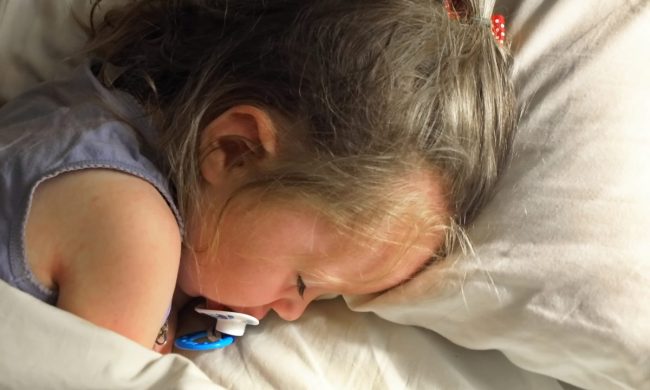Sleep training books are a great way to help children understand their bedtime routine and begin to calm down at the end of the day. It’s more than just sleep training, however. Reading has powerful emotional, social, and mental benefits, both for your child and for you.
Parents can benefit from reading these sleep training books as well, which makes this time together before bed a vital part of your child’s life as well as yours. If you’re wondering what the point is in sleep training books or need any more encouragement to be intentional about reading them with your child before bed, this article is an excellent place to start.
Why does reading matter?
It’s drilled into us as parents that reading is a vital part of early development, but why should we be focusing on reading? It’s a foundational skill and experience that can have profound impacts on your child’s development. Here are a few good reasons.
Cognitive development

Your child is busy building new pathways in their brains for critical thought and learning. Reading helps children understand, empathize, and perceive the world. As you’re reading, your child is receiving valuable background information about life and the world.
Sleep training books capitalize on this learning process to begin teaching your child what to expect at bedtime and why they’re doing the things they’re doing. And as you’re reading, the interaction is helping your child bridge the story with what’s happening in their lives.
Emotional Development
Your child is also responding emotionally to what you’re reading. Reading is valuable by itself, but it’s also vital to interact with your child. This bonding experience creates a ritual and a sense of safety. Your child loves to be around you, and reading the story together helps both of you bond emotionally.
Improved Language
As you read to your child, valuable language input is happening. Your child is learning vocabulary to describe the nighttime routine and the emotions with it. Reading from an early age is correlated with greater cognitive skills that your child needs to start school, including vocabulary, visual skills, and meaning-making.
Why do parents benefit from reading?
Just because you’re an adult doesn’t mean that the benefits of reading have stopped for you. Reading can help adults to gain empathy skills as well as provide stress relief at the end of a busy day.
As you bond with your child, you’re also receiving important emotional input, which allows you to build a greater understanding of your child and to slow down and offer your full attention in the present. This meditative practice at the end of each day can also be an important signal for your body that it’s time to unwind and begin the bedtime routine yourself.

Parents can also use these sleep training books to discover why children may be having trouble with the bedtime routine itself. Very young, emerging verbal children can use the pictures from the book to provide feedback about bedtime, helping parents brainstorm solutions for specific sleep issues.
Reading can provide valuable stress relief for parents, but only if it’s something that doesn’t challenge them or cause distress. Sweet bedtime stories that give parents the chance to slow down and enjoy the moment can help with your daily stressors.
How to get the most out of reading at bedtime
To make reading at bedtime a memorable and valuable time for both you and your kids, keep these things in mind.
Create a ritual
A ritual, rather than a strict schedule, means doing things in a particular order. Give your child an understanding of the steps to bedtime to encourage them to wind down and fall asleep more easily.
For example, make reading the last thing you do before turning out the light and just after putting on fresh pajamas. Your child can follow the routine and knows what’s coming each time. Then, if bedtime happens a little later on a particular day, the ritual is still in place.

For some parents, the book could also be a signal to begin their own bedtime ritual as reading has the power to calm the mind and body down in preparation for sleep.
Lead by example
Parents who mimicked yawning and calming down have a better chance of getting their child to calm as well. Children can listen and interact with the pictures, but reading at bedtime is meant to be the verbal equivalent of rocking an infant.
As your child gets calm and watches you pretend to yawn, the social cues have an effect on them as well as you. Yawning is a social activity, so you could find yourself getting sleepy and calm even if you weren’t before.
As you begin the ritual and show your child what to do, it can have a profound effect on your emotional state. Everyone gets ready for bed together, and the house begins to quiet down. It’s time for everyone to relax and prepare for the best sleep.
Parents sometimes forget their own bedtime rituals, so this could be a jumping-off point to ensuring that everyone in the house has a reliable bedtime ritual. Again, yours may start where your child’s ends, but it all accomplishes one thing — a relaxing and soothing bedtime that helps everyone sleep more soundly.
Allow reading to transform your household
Books are a vital part of helping your child develop awareness and build critical cognitive skills. It’s essential that you help your child build awareness, critical neurological pathways, and emotional skills. And it’s not just your child that benefits from this time you spend together with a good book.
For you, reading can be an essential bit of stress relief. Once your body becomes accustomed to the bedtime ritual you provide for your child, you may feel yourself unwinding as well. Everyone in the house can have the best chance at a quality night’s sleep, and it can all start with that child’s sleep training book.


